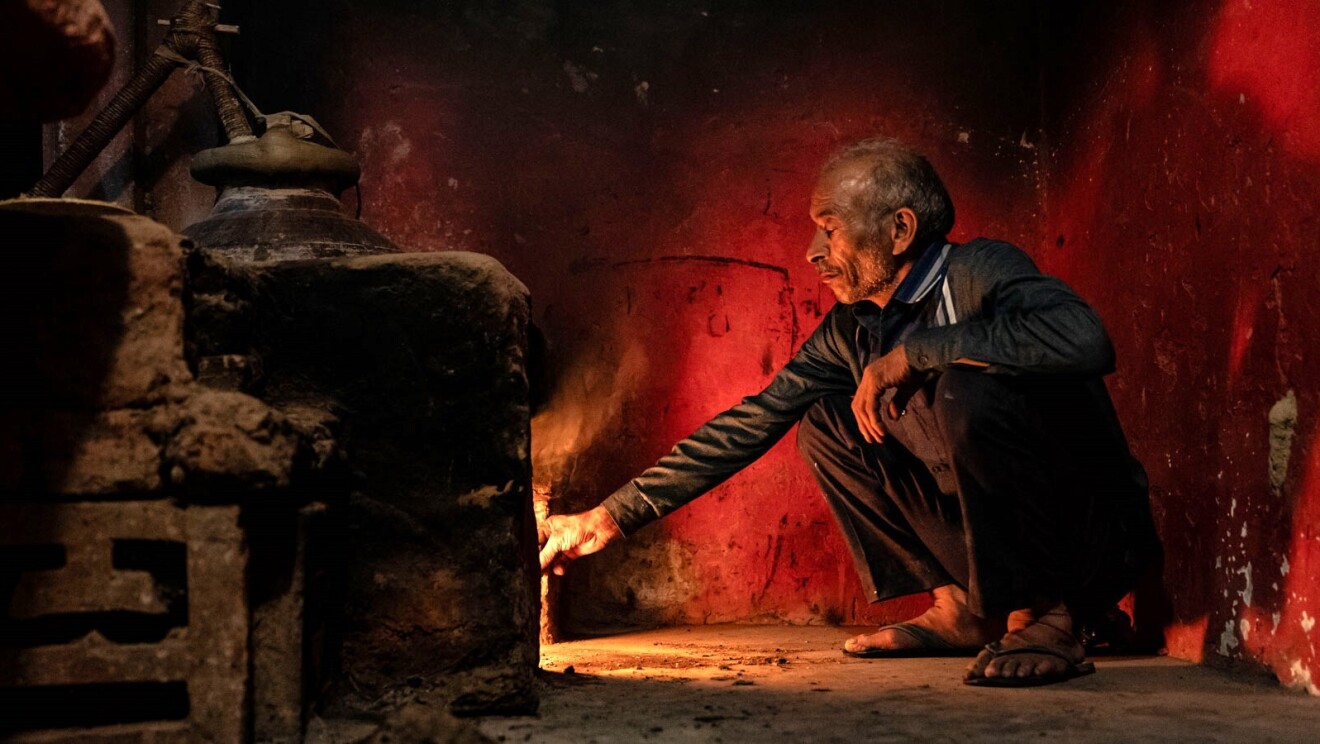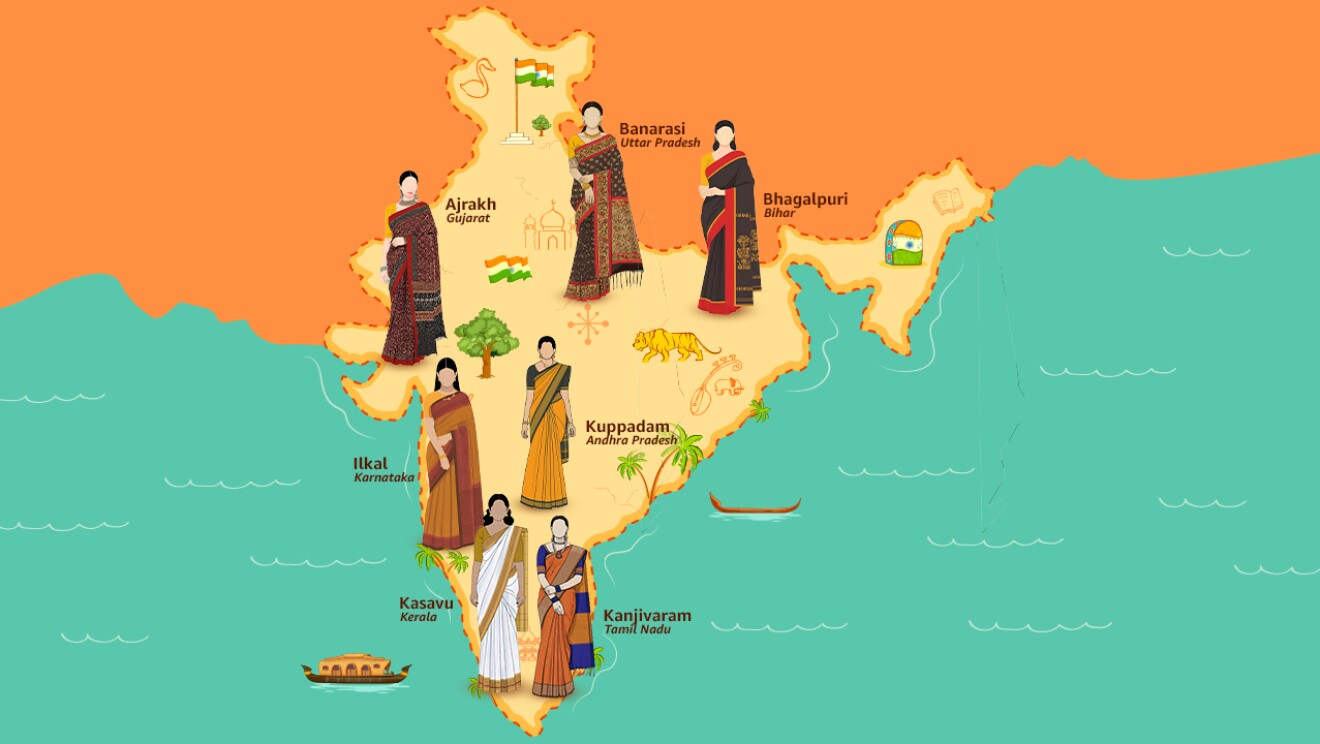Eighty kilometres north of Kolkata on NH12, fields of jute and clusters of mangroves give way to Santipur, a quaint town on the banks of the river Hooghly. As you walk through its narrow lanes meandering through small dwellings, there is a sound you cannot miss—the rhythm of the khadi loom. Every other home in Santipur has a loom. An estimate from 2017 suggests that Santipur has about 60,000 weavers and 20,000 looms.
As India celebrates 77 years of independence, the traditional khadi weaving centre of Santipur in West Bengal is undergoing a transformation. Over the years, Santipur has become synonymous with its khadi sarees, cherished for their soft texture and delicate borders. Entrepreneurs such as Balram Burman, founder of Shyamali Boutique, have helped take his community’s beloved khadi cotton sarees pan-India through Amazon.in. Reflecting on the enduring appeal of khadi sarees, Burman says, “khadi is versatile. It’s perfect for all seasons, and it suits any occasion. People appreciate its simplicity and comfort, and there’s a sense of pride in wearing something that’s so deeply rooted in our culture.”
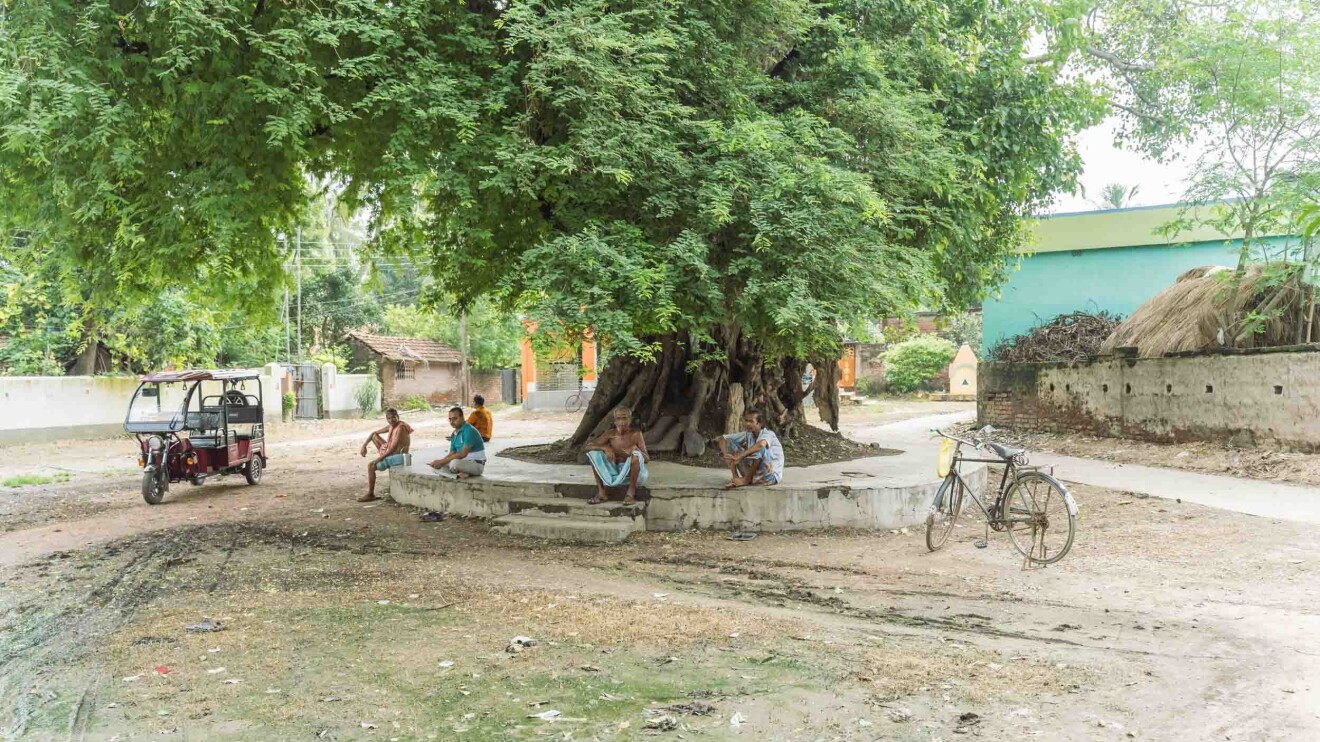

A legacy of craftsmanship
Balram Burman’s story begins 50 years ago with his grandfather, Nagender Chand Burman, a handloom weaver who, through his enterprise and skill, grew into a master weaver. He took on the responsibility of supplying raw materials to other weavers, providing intricate designs, and ensuring fair compensation for the sarees they made. These sarees were then sold wholesale to retailers across the region.
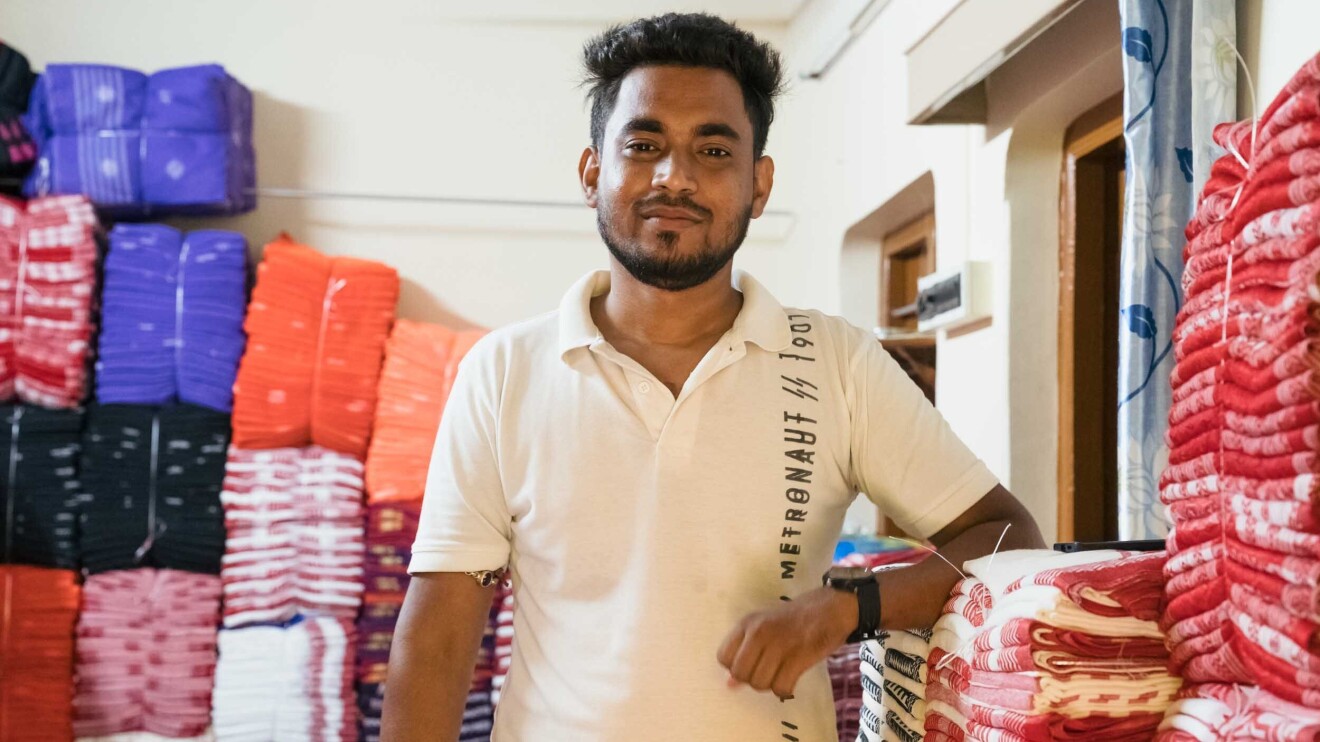
Carrying forward this family legacy, Balram founded Shyamali Boutique in 2019, naming it after his mother. In December 2023, he took his business online, selling sarees on Amazon.in. Over the past eight months, Shyamali Boutique has seen significant growth, with Balram now selling between 30-40 sarees a day on the marketplace.
Each day, Balram receives the details of his Amazon orders. The sarees, crafted by the weavers he collaborates with, arrive at his home, where they are packed in polythene bags. Labels are printed, the sarees are placed into courier bags and the labels are attached. After 2 p.m. each day, an Amazon pickup partner arrives to scan the barcodes and labels. Following this, a pickup truck comes to collect the packages, ensuring that the sarees reach customers in a timely manner.
What started as a small-scale operation has expanded its reach across India, bringing Balram’s sarees into homes far beyond West Bengal and sustaining the livelihoods of numerous grassroots weavers in Santipur.
A craft with a storied history
Santipur was exporting fine muslin fabric to Europe and the Middle East as far back as the 17th century. However, this community of weavers faced significant challenges during the turbulence of the industrial revolution and the British Raj. Yet, even during the darkest days of the Great Bengal Famine of 1770, when a quarter of Santipur’s weavers perished, the looms never stopped working—driven by the deep pride these weavers take in their craft.
Today, this pride continues to burn bright.
Khadi is also our nation’s fabric. More than a century after Mahatma Gandhi made it a rallying point for the Swadeshi movement, it continues to be a cornerstone of our national identity. The first piece of hand-woven cotton from the Sabarmati Ashram was called ‘khadi’ by Gandhi back in 1917, for its coarseness. Since then, from a symbol of self-reliance to a staple of India’s leading fashion houses, khadi has come a long way.
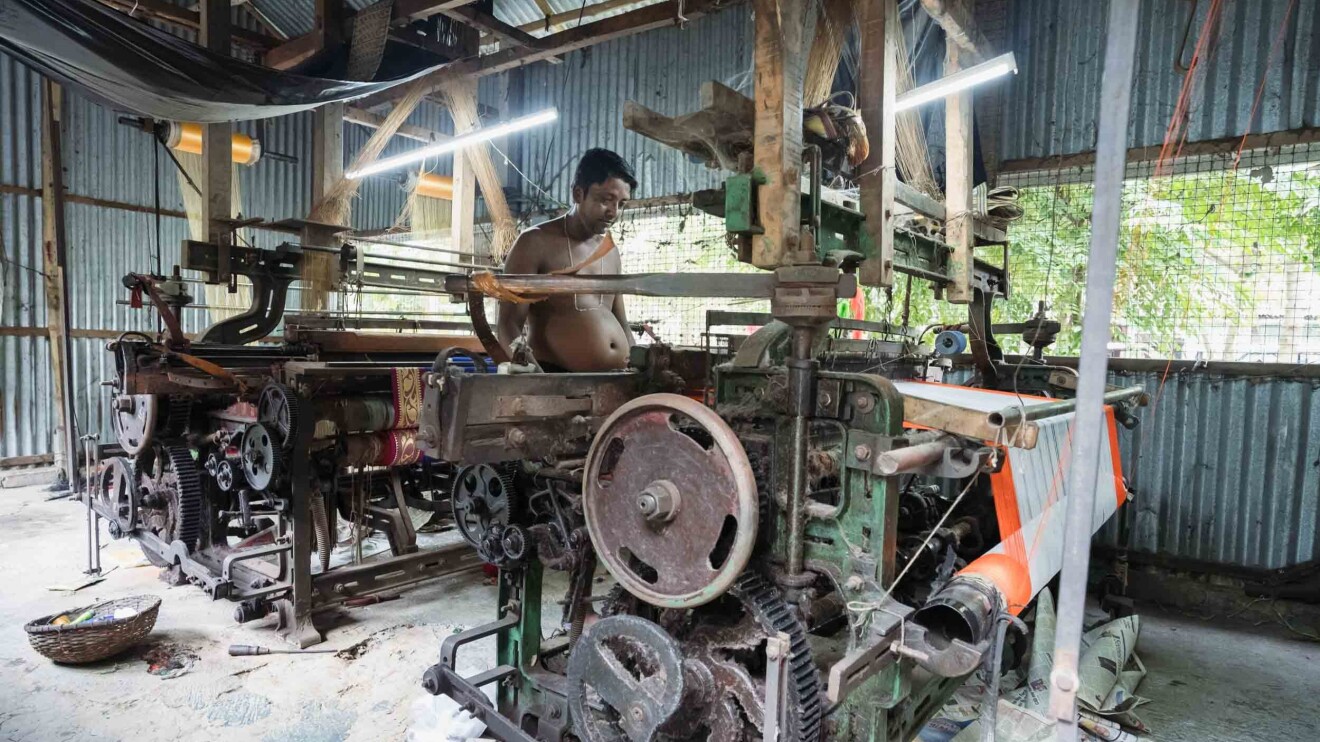
In recent years, the khadi industry has seen a significant revival, driven by a growing consumer preference for sustainable and locally-made products. This resurgence has also been bolstered by a series of government initiatives aimed at not just preserving, but actively promoting khadi and supporting the artisans who craft it.

Programs like the Khadi and Village Industries Commission (KVIC) and more recently, Make in India, have played a key role in this transformation. These schemes not only provide financial support but also help in modernising the production processes, making khadi more accessible to consumers.
The intricate process of weaving a saree begins with Rang karo: the art of dyeing

A khadi saree’s journey begins with the vibrant art of dyeing or Rang Karo. The process starts with raw, uncoloured suta, or threads, arriving from factories across India. These threads are thoroughly washed to remove impurities and then laid out to dry in the sun, preparing them for the next stage.
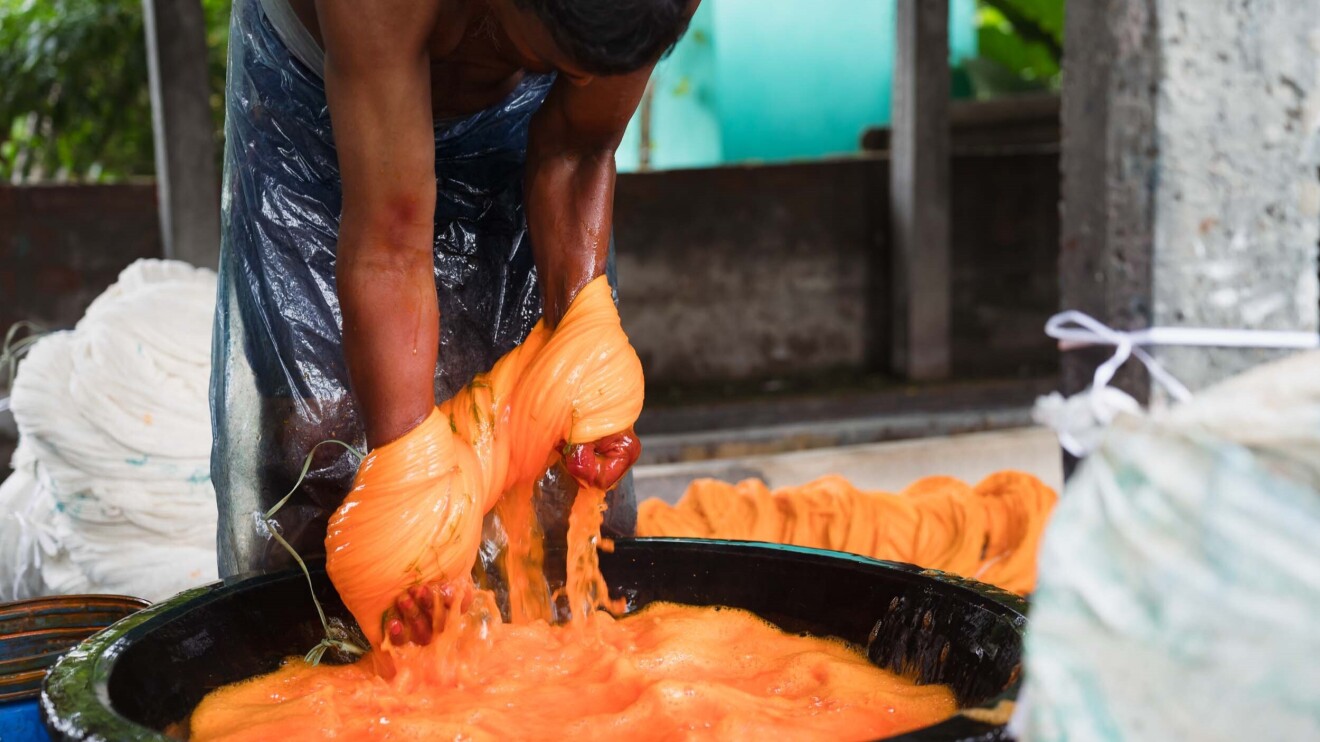
The dyeing process follows, where the threads are bundled together and carefully dipped into vats of rich, colourful dyes. With skilled hands, the dyer twists and squeezes the bundles to ensure an even distribution of colour, repeating the process until the desired shade is achieved. The dyed threads are then laid out to dry once again.

Drum haata: Spinning the yarn
The next step is drum haata or spinning, where dyed threads are transformed into weavable yarn. This stage is crucial in achieving the fine texture and durability that khadi sarees are known for.
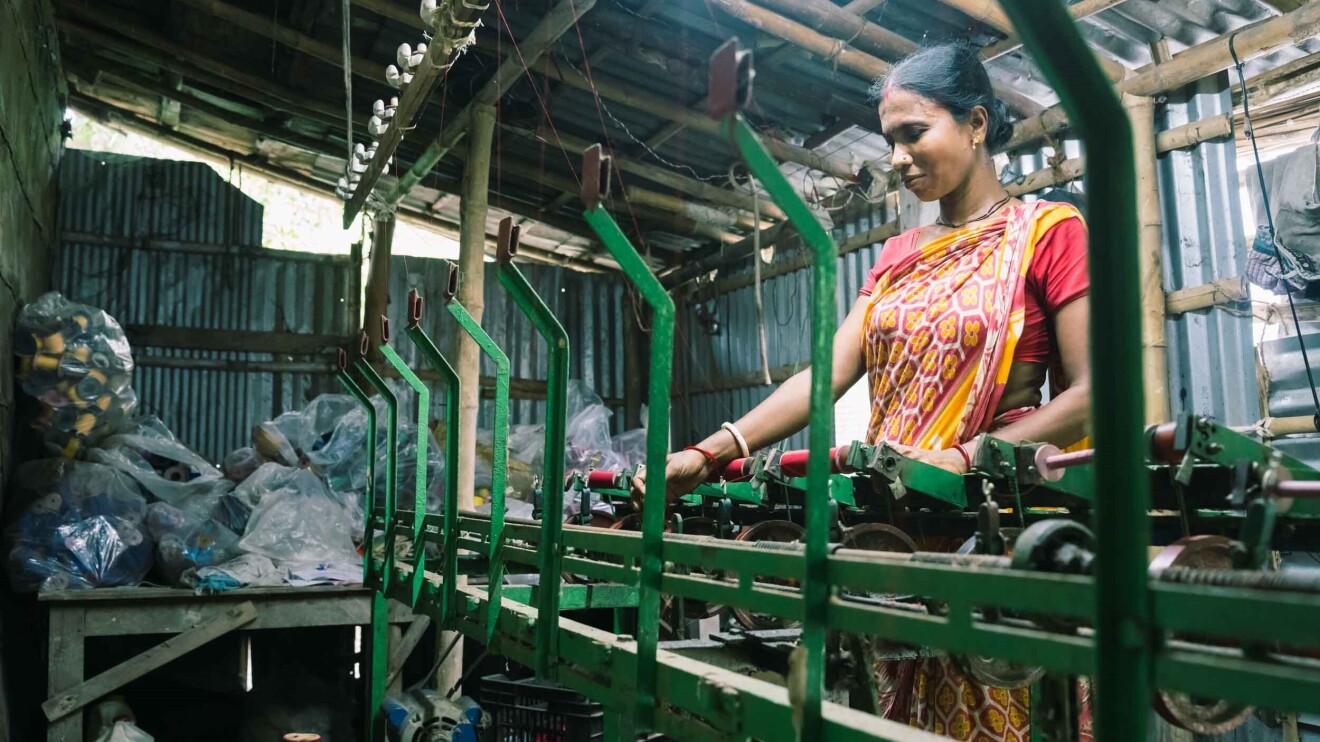
The spinning process starts with the dried, dyed threads being wound onto large reels called dhop. These threads are then carefully guided into a charka, a spinning wheel that winds them onto smaller reels known as khatim. Precision and patience are key here, as the threads must be spun evenly to ensure consistency in the final weave.
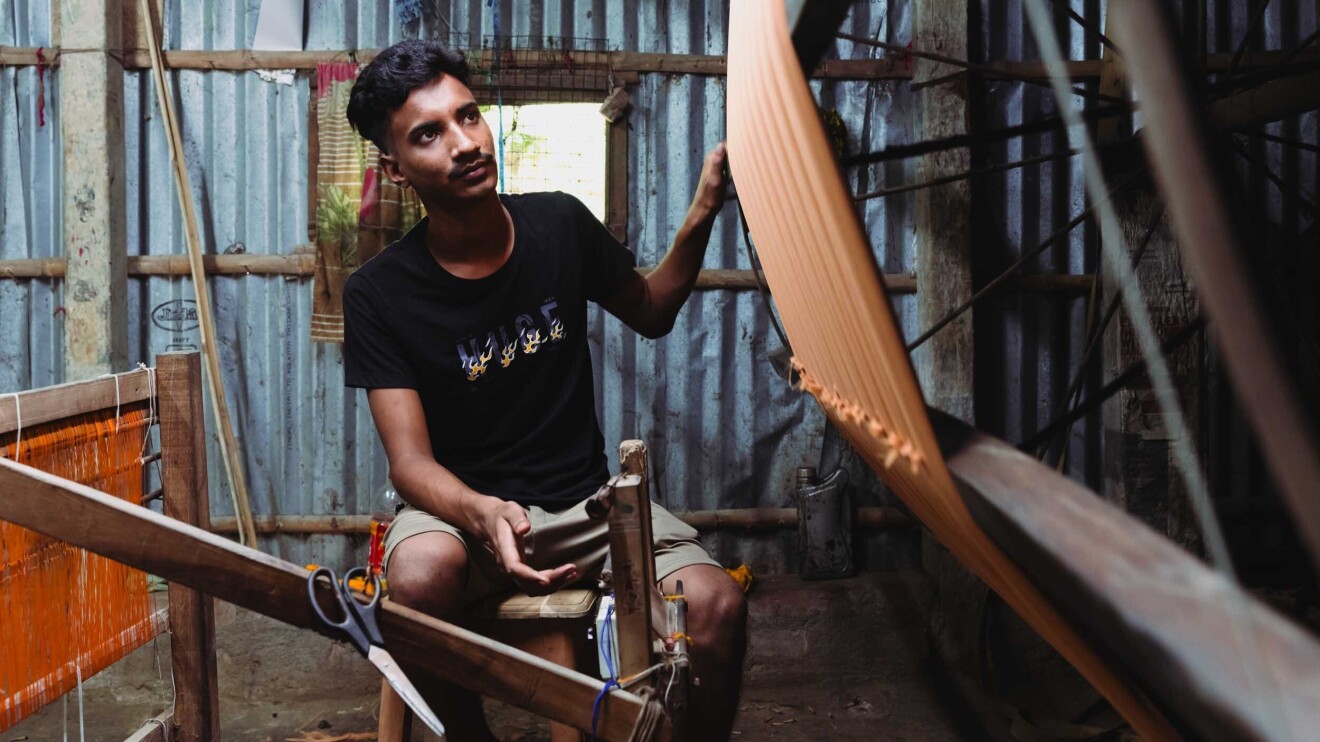
Once wound onto the khatim, the threads are transferred to a larger drum, where they are aligned and stretched out, and finally wound onto a beam, ready for the weaving stage. Each beam typically holds enough material to produce between 100-200 sarees.

Tant bona: The dance of the loom
Once the beam is attached to the loom, tant bona or weaving begins. Very simply, weaving is the process of interlacing threads perpendicular to each other to create cloth. A tant or the loom, holds the threads in place, allowing the weaver to work their craft.
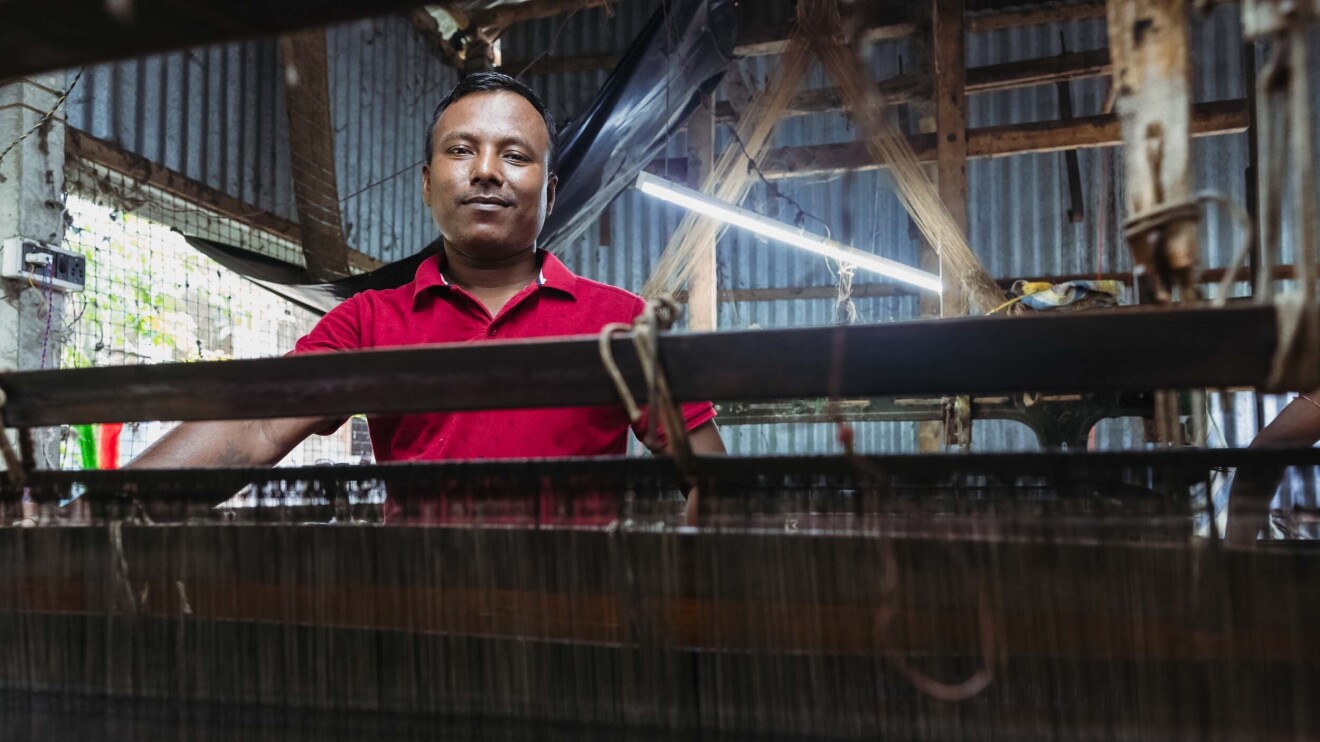
The process starts by stretching out one set of threads (the warp), parallel on the loom. Another thread (the weft), is then woven over and under the warp threads, moving back and forth across the loom. The weft is wound around a maku—a shuttle that carries the thread across the loom.

Weavers in Santipur often work two looms simultaneously, spending long hours at their craft, typically producing around 15-16 sarees a day. Samar Ghosh, a weaver with Shyamali Boutique who learned his craft 15 years ago from a neighbour, takes great pride in his work.
One day on TV I saw Madhuri Dixit wearing a saree with my design.
Samar is now passing on his skills to the next generation, ensuring that this traditional craft continues to thrive.
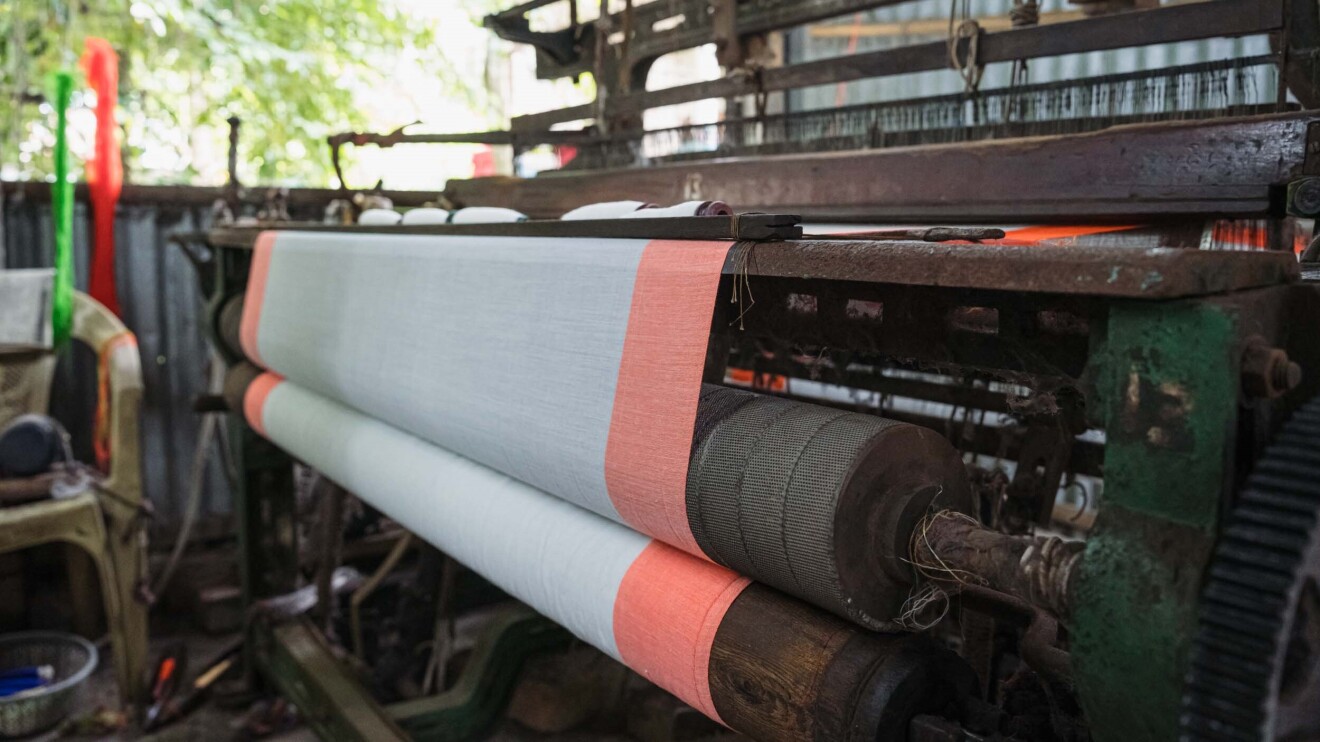
The last of the handlooms

While most khadi sarees in Santipur are crafted using powered looms, the traditional handloom still exists, though these are becoming increasingly rare. Among the few weavers who continue to operate handlooms is Ashok Biswas. In his modest, thatched home, surrounded by his family, Ashok works tirelessly at his handloom using both his hands and feet. The setting is humble—a single room where the loom occupies centre stage.

For Ashok, the handloom is more than just a tool; it’s a connection to a rich tradition. "The handloom allows me to work at my own pace," he says. "There’s a certain artistry in weaving by hand that you don’t get with machines." It takes Ashok up to 12 hours over 2 days to complete a single saree, with each piece representing a labour of love and skill.
Threads of hope
A khadi saree is more than just a piece of clothing; it’s a work of art, woven with threads that carry the stories of generations. Khadi breathes, it drapes effortlessly, and it embodies an essence of India's cultural heritage. The intricate patterns, the natural hues, and the craftsmanship make each khadi saree unique, a reflection of the hands that create it.
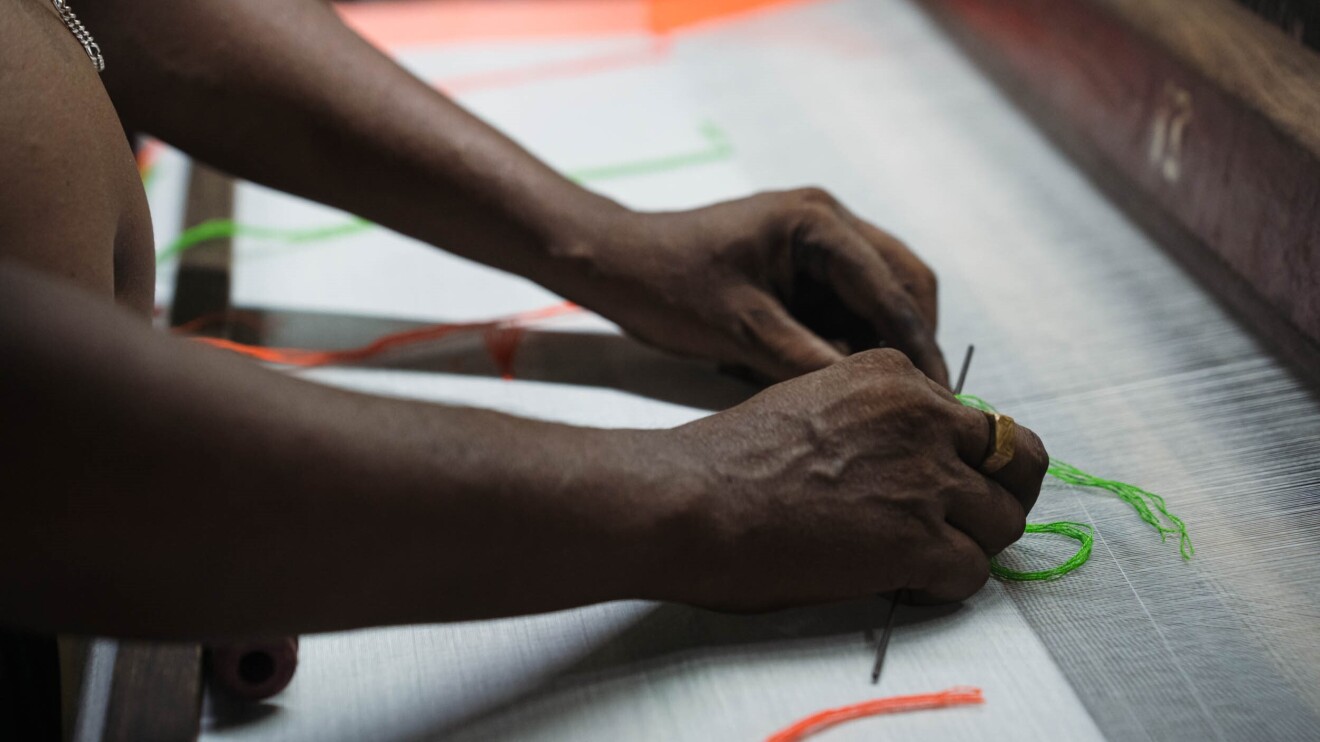
In Santipur, an entire community of weavers, dyers and spinners is dedicated to keeping this tradition alive. And their hopes are pinned on a new generation led by people like Balram and organisations like Shyamali Boutique. For this craft to survive and thrive, it will take the collective effort of the whole community. As Balram puts it, “Lots of hands need to turn to make one saree.”







